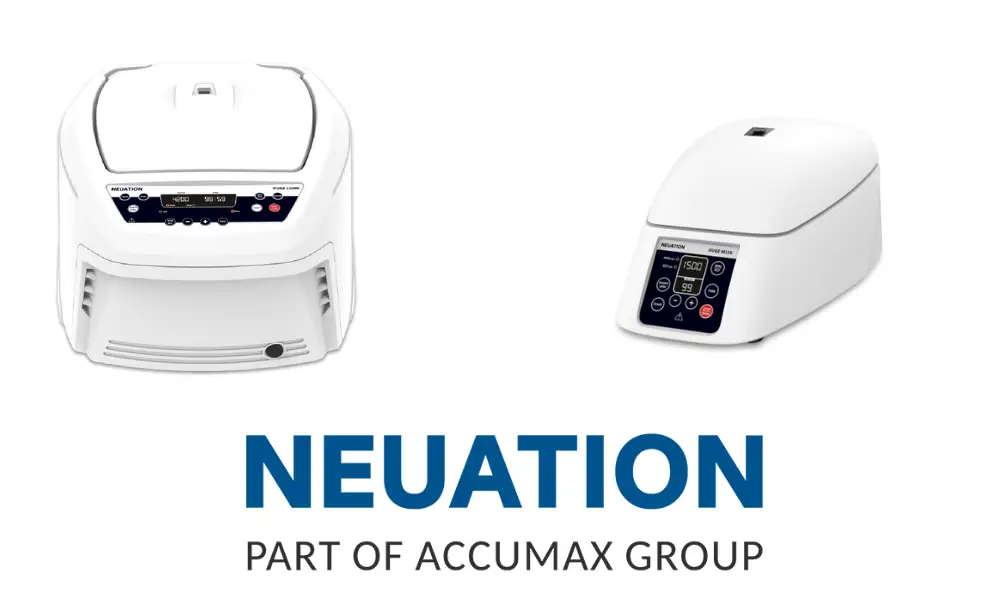Centrifuges
Centrifuges are large machines used to separate larger volumes of samples. They can be benchtop models, depending on the laboratory’s requirements. Centrifuges typically have a higher capacity than microcentrifuges and can accommodate larger volumes of samples. They also have higher speed capabilities, which means they can spin samples at higher speeds and generate more centrifugal force.
They are commonly used in clinical laboratories, where they are used to separate blood components such as red blood cells, white blood cells, and plasma. They are also used in research labs to separate proteins, nucleic acids, and other cellular components.
Factors to consider when selecting a centrifuge include the maximum speed, the maximum capacity, and the number and type of rotors that the centrifuge can accommodate. Other factors to consider include the noise level, the ease of use, and the price.
Microcentrifuges
Microcentrifuges are smaller, benchtop models that are used to separate smaller volumes of samples. They are commonly used in molecular biology, biochemistry, and microbiology laboratories to separate cellular components such as DNA, RNA, and proteins. They are designed to accommodate smaller volumes of samples, typically between 0.2 & 2 ml.
They have a smaller footprint than centrifuges, making them ideal for labs with limited spaces. They also have a lower power requirement, which means they can be powered from a standard electrical outlet. Microcentrifuges typically have a lower speed capability than centrifuges, but they can still generate sufficient centrifugal force to separate small particles and components.
The factors to consider include the maximum speed, maximum capacity, and the number & type of rotors that the microcentrifuge can accommodate. Other factors to consider include the noise level, the ease of use, & price.
Centrifuge & microcentrifuges are essential pieces of equipment used in a wide variety of laboratory settings. They are used to separate particles and components of a sample based on their mass, size, and density. This separation is achieved by subjecting the sample to high-speed rotation, which creates centrifugal force. The different components of the sample are then separated based on their differential sedimentation rates, with the heavier components settling more quickly than the lighter ones.
Centrifuges and microcentrifuges differ mainly in their size & capacity. Microcentrifuges are smaller and can accommodate smaller volumes of samples than centrifuges.
Centripetal or Centrifugal Force?
The terms “centripetal” and “centrifugal” are often used to describe the forces that act on objects moving in a circular path, but they refer to different things.
Centripetal force is the force that keeps an object moving in a circular path. It is always directed towards the center of the circle and is required to prevent the object from flying off a straight line.
Centrifugal force, on the other hand, is a term used to describe the apparent force that seems to push an object away from the center of a circular path. It is not a real force, but rather an effect of the object’s inertia, which causes it to continue moving in a straight line even as it follows a curved path.
Centrifugation is a technique used to separate mixtures based on the differences in particle density, size, or shape. There are several types of centrifugation methods, including:
-
Differential Centrifugal
This is the most common type of centrifugation used for the separation of cellular components. In this method, a mixture is subjected to low-speed centrifugation to separate large particles like nuclei, mitochondria, and other organelles from the smaller particles like proteins, lipids, and nucleotides.
-
Density Gradient Centrifugation
This method is used for the separation of particles based on their density. A density gradient is created in a tube by layering a sample on top of a gradient medium. Upon centrifugation, particles move through the gradient and eventually settle at their respective positions depending on their density.
-
Ultracentrifugation
This is a high-speed centrifugation method used for the separation of particles in a sample. It can be used to separate particles based on their size, shape, and density. This method is used extensively in biochemistry and molecular biology to isolate macromolecules like proteins, nucleic acids, and lipoproteins.
-
Isopycnic Centrifugation
This method is used to separate particles of similar density. In this method, a sample is subjected to high-speed centrifugation in a density gradient medium. Upon centrifugation, particles with similar density settle at the same position in the gradient, forming a band.
-
Preparative Centrifugation
This is a large-scale centrifugation method to purify molecules or particles from a complex mixture. It is commonly used in industrial processes like the purification of enzymes, vaccines, and other pharmaceutical products.
While centrifugation is a routine procedure in many laboratories, it can also pose significant safety risks if not handled properly. Here are some essential centrifuge safety measures that should be followed:
- Read the manual
- Use appropriate tubes
- Balance the load
- Use appropriate speed & time settings
- Wear appropriate PPE
- Inspect the rotor
- Avoid opening the centrifuge while in operation
- Clean the centrifuge
Neuation offers world-class laboratory equipment with 10 product categories. Check Neuation website for centrifuge products like Micro Centrifuge, Doctor Centrifuge, Clinical Centrifuge, Lab Centrifuge, Universal Centrifuge, & Refrigerated Centrifuge.
Original Source: https://thebillionairepost.com/a-guide-to-centrifuge-and-microcentrifuge/







